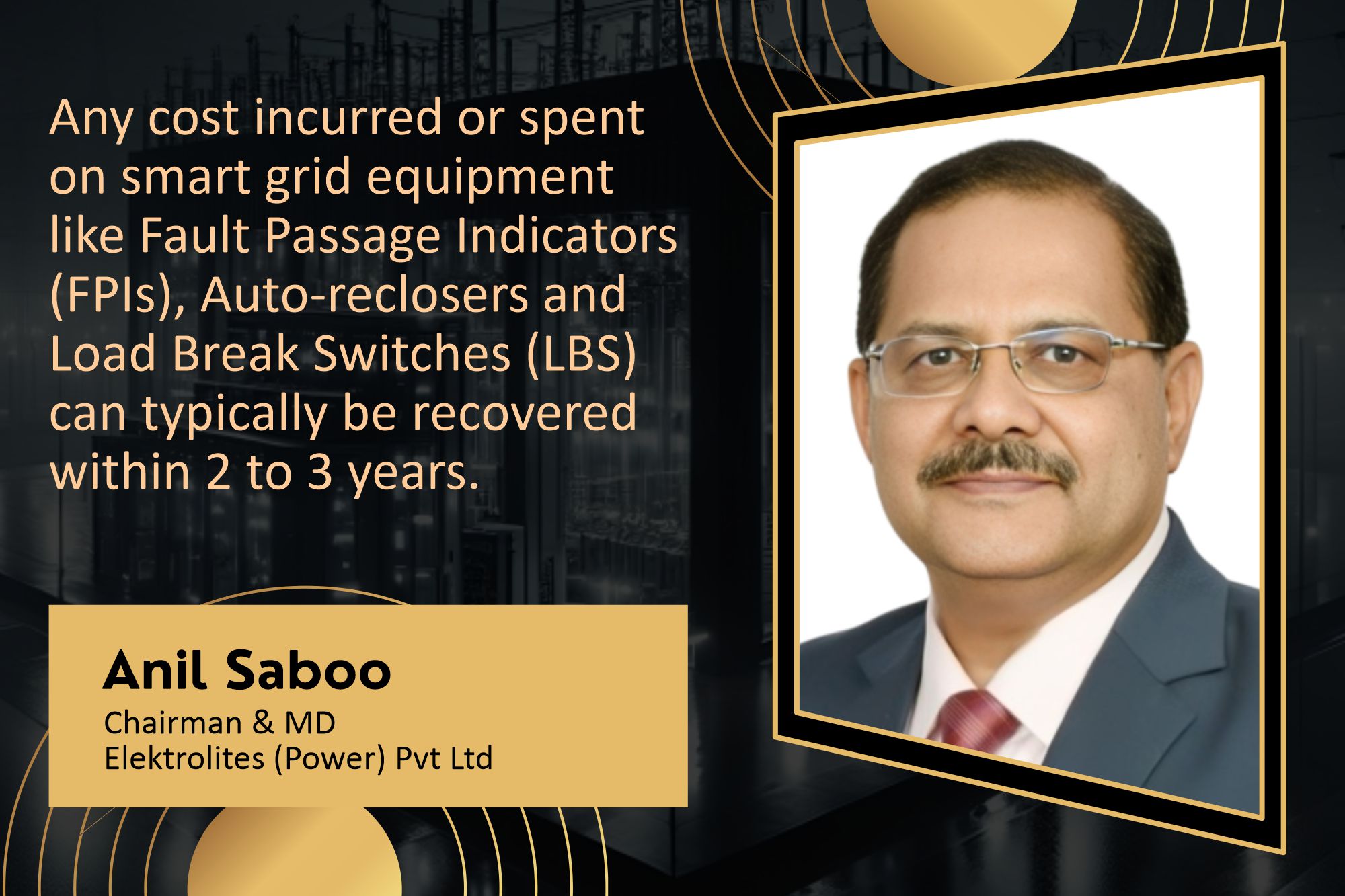Smart Grid devices pay off in 2–3 years, boosting reliability and efficiency
By Staff Report April 25, 2025 2:32 pm IST
By Staff Report April 25, 2025 2:32 pm IST

Any cost incurred or spent on smart grid equipment like Fault Passage Indicators (FPIs), Auto-reclosers and Load Break Switches (LBS) can typically be recovered within 2 to 3 years. This is achieved through quicker grid restoration times, reduced manpower requirements and improved operational efficiency.
Advancements in switchgear technology are revolutionising power infrastructure by enhancing grid resilience, operational efficiency and sustainability. Through innovations like predictive analytics, digitalisation and eco-friendly materials, these technologies enable smarter, safer and more reliable energy systems. In India, such progress supports the transition to a decentralised, intelligent, greener power grid. Anil Saboo shares more in talks with EPR.
How do advanced switchgear technologies improve grid resilience and sustainability in India, and what challenges and strategies are involved?
Advancements in switchgear technology improve grid resilience and operational efficiency through innovations like predictive analytics, digitalisation and advanced materials. Advanced switchgear technologies detect and isolate faults quickly, reducing breakdowns and enhancing grid stability. Predictive maintenance and optimised performance lead to significant cost savings and improved operational efficiency. Eco-friendly materials and reduced energy waste contribute to a more sustainable power infrastructure.
In India, initiatives like the National Smart Metering Programme and grid digitalisation efforts promote the adoption of advanced switchgear technologies. These advancements drive the transformation towards a more resilient and sustainable power system. By leveraging these technologies, India can improve its grid’s efficiency, reduce costs, and enhance sustainability. This will help meet the country’s growing energy demands while minimising its environmental impact.
If we speak of challenges, the major one would be the non-availability of the best technologies in India. Historically, India has fallen short of the quality-consciousness metric, which has led to substandard product quality. The world is at another level in this field at the moment, and India has a lot of catching up to do.
The government could develop a lucrative investment plan so that technologies existing worldwide are invested in India with the assurance of regular returns ensured by correct specifications and quality-conscious buying in place of lowest-price bidding.
How can retrofitting substations with multifunctional switchgear improve reliability and reduce operational costs?
Retrofitting existing substations with advanced switchgear solutions offers significant cost and operational advantages by reducing capital expenditure, lowering installation costs and minimising downtime. It enhances reliability by delivering improved performance, safety and operational flexibility. These solutions also bring scalability to the system by enabling easy integration of new technologies and adaptability to evolving energy demands. A great example is our reclosers from NOJA Power, Australia – the same switch can function as a load breaker, sectionaliser and recloser, all with just the click of a button. This level of multi-functionality significantly boosts operational efficiency and system responsiveness.Retrofitting also preserves existing infrastructure, reducing waste and minimising environmental impact. Fast installation during scheduled downtime ensures minimal disruption to the power supply, making this approach both cost-effective and efficient. Moreover, any cost incurred or spent on smart grid equipment like Fault Passage Indicators (FPIs), Auto-reclosers and Load Break Switches (LBS) can typically be recovered within 2 to 3 years. This is achieved through quicker grid restoration times, reduced manpower requirements and improved operational efficiency. At the same time, consumers benefit from a reliable, uninterrupted 24×7 power supply, enhancing overall service quality and satisfaction.
How can SF₆-free switchgear significantly contribute to environmental sustainability and electrical system safety?
New SF₆-free switchgear technology offers a boost in sustainability and safety benefits by eliminating the potent greenhouse gas SF₆, reducing environmental impact, and providing improved insulation and arc-quenching properties. This enhances the overall safety and reliability of electrical systems, promoting a greener and safer energy future.
Our climate is hanging by very narrow margins, and anything that disrupts the balance will have a long-lasting impact on everything around us. Eliminating greenhouse gases and choosing well-proven alternatives must carry higher weightage during evaluation.
We use cookies to personalize your experience. By continuing to visit this website you agree to our Terms & Conditions, Privacy Policy and Cookie Policy.